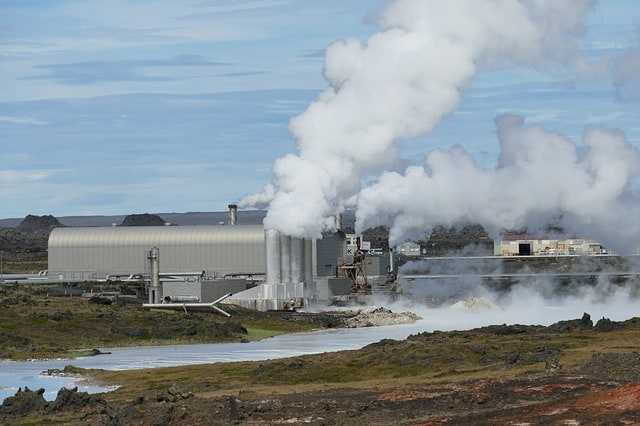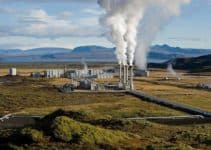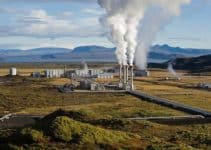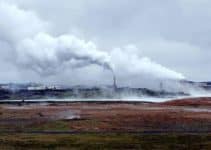4000 miles underneath the surface of the earth is incredibly hot. In fact, scientists estimate that it’s over 7,000 degrees Fahrenheit. While this temperature is exceedingly hot, dangerous and must be avoided at any cost, if you took the initiative to drill approximately 3 to 4 miles underneath the surface of the earth, you will come across a hot rock that is a lot less dangerous with a temperature of about 300 to 400 degrees Fahrenheit. This hot rock can be utilized as a steady source of heat, but would be very costly to harness.
Now, while harnessing heat from this rock can be overly costly, other options exist. In other places, just some few hundred feet underneath the earth’s surface, areas exist that have pooled together underground water and this hot rock to generate hot water streams. This water stream is the most economical heat source (geothermal energy) underneath the earth and can be utilized in a wide range of ways including heating homes, businesses and to power large farms or generate energy for greenhouses. The hot water can also be converted into steam and directed to turn a turbine, which powers a generator to produce electricity.
Geothermal energy is energy harnessed from the earth’s internal heat underneath the earth surface. To extract the energy, geothermal wells are drilled into the earth’s crust at a depth of about 3 to 10 km. The heat is extracted from inside the earth’s crust using different methods, but the most popular one is using water and steam. Hot water from the hot water reservoir below may be extracted and directly channeled to heat homes and buildings. This is achieved by circulating the hot water throughout the building or pumping the hot water via a heat exchanger, which emits the heat insides the building. The hot water can also be converted into steam and directed to turn a turbine, which powers a generator to produce electricity at a geothermal power plant.
What is the source of the earth’s internal heat?
Earth’s initial formation
In the course of earth’s initial formation, kinetic energy, which is in the form of gravitational and heat energy were generated. The slow settling or cooling process of the earth, plus its surface transmission of heat via conduction and convection consisted of a small of earth’s thermal heat source. Geothermal energy technologies harness this heat for various purposes.
Chemical processes
Naturally, heat converts plants into chemical energy through photosynthesis. When these plants die, they go through a process called biodegradation, introducing chemical energy into the earth as fossil fuels like coal and oil.
Radioactivity
On top of convection and conduction, radiation also emits this thermal energy. Radioactive isotopes of potassium, uranium and thorium decay, eventually emitting energy.
Magnetism
As the core of the earth cools via a process known as crystallization, heat is emitted as well as gravitational potential energy, which produces the earth’s magnetic field.
Various Types of Geothermal Power Plants
Geothermal power plants utilize hydrothermal resources that contain both heat (thermal) and water (hydro). Geothermal power plants need high-temperature geothermal resources (300°F to 700°F) that originate from either hot water well or dry steam wells. Individuals utilize these resources by drilling wells underneath the earth and pump hot water or steam to the surface, which is used for heating and generation of electricity. Some investors drill geothermal wells up to two miles deep. With that said, here are the main types of geothermal power plants.
- Direct dry steam
This was the first kind of geothermal power plant to be built. The first place to be utilized was Lardarello in 1904 in ancient Italy. Direct dry steam geothermal power plant utilizes hydrothermal fluid, which is basically steam. The steam is channeled straight to a turbine, which is attached to an electromagnet (generator). The turning of the turbine triggers a generator to produce electricity.
The steam alienates the need for burning of fossils fuels to heat water (steam) to generate electricity. It also alleviates the need for transportation and storage of fuels. These plants are eco-friendly since they give off only excess steam and small quantities of gasses. Despite its old age, steam technology is still used these days, particularly at the Geysers in northern California, which stands as the largest geothermal power plant in the world.
- Flash and double flash cycle
These are the most predominant geothermal power plants operating in this day and age. Higher temperature fluid (temperatures above 360°F (182°C) is pumped under extremely high pressure into a tank set at a relatively lower pressure. The lower pressure tank triggers some of the fluid to vaporize or flash instantly. The vapor is then directed to spin a turbine, which powers a generator to produce electricity. In case any liquid remains in the low-pressure tank, it can be vaporized again in the second tank to harness additional energy.
- Binary cycle
Binary cycle geothermal plants greatly differ from their direct dry steam and flash counterparts. How? The water or steam extracted from the hot reservoir below the earth’s surface doesn’t come into contact with the turbine.
The hot water is extracted from the hot water reservoir below and delivered to the power plant using pipes. The hot water is then distributed to each of the network of power generation units in parallel through the large pipes feeding each row of multiple units. Every power generation unit produces its own power at the same time from the hot water reservoir.
In this binary cycle system, the water or steam doesn’t come into contact with a turbine. Instead, its heat is transferred to a second working fluid as it glides through the coils in the heat exchange tank. Since the working fluid has a much lower boiling point than water, the fluid vaporizes(flashes) fast at lower temperature of as low as 14 degrees Celsius and moves upwards passing through the turbine.
Pressure emanating from the vapor rotates the turbines. The turbines trigger the generator to produce power. Every unit is capable of producing approximately 280 KW of power. By synchronizing power from all the units, approximately 11 megawatts of power is produced by this plant.
The used well water, which is approximately 21 degrees Celsius cooler, is transferred to injection wells, where it’s pumped back to the hot water reservoir. There, it is heated again by the hot rocks and sucked up again to continue the power production cycle.
After turning the turbine, the vapor is directed up into the condenser tank. Here, cooling water is allowed to enter into the condenser from the cooling towers via coils in the condenser tank and eventually cools the vapor, enabling it to condense back into fluid, which collects at the bottom of the tank. The cooling water usually enters the cooling tank at a temperature of approximately 19 degrees Celsius, but after performing its function of cooling the working fluid, it’s allowed to leave the tank at a temperature of about 30 degrees Celsius.
The working fluid is now allowed to flow down the outlet of the tank to the pump. In the pump, the working fluid is re-pressurized and pumped back into the exchanger tank to repeat the cycle. For the water to be used again, it’s allowed to flow back to the cooling tower, where it’s cooled back to 19 degrees Celsius.
It’s imperative to note that the three fluid systems of the working fluid, hot reservoir water and cooling water coming from cooling tower remain in their individual loops and never come into contact to ensure no contamination and emissions.



